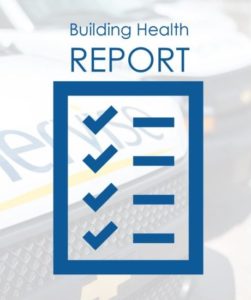When new buildings are designed and constructed, they are intended to conform fully to the governing building compliance guidelines and safety regulations. That, of course, means there is very little risk of legal liability to owners or operators in a new facility, an legal issues are likely to fall heavily on the designers and engineers in the unlikely event of injury, damage or death,
However, when it comes to slightly (or significantly) older facilities, where once acceptable designs have been grandfathered in but would not strictly pass muster today, the legal liability related to building compliance and safety regulations becomes a far murkier and more complex issue. Here is what you need to know.
General Liability Related Issues: Litigation Likely to Focus On Foresee-ability
In cases where injuries, damage or death lead to litigation, and where building compliance and safety codes are a factor, courts are far more likely to consider whether:
- the injury, damage or death was foreseeable
- whether the owner, landlord or operator exercised their ‘duty of care’ to mitigate the risk.
In other words, whether you have been cited for an infraction or not, if you could reasonably have predicted a problem, you may well still be liable.
Inspection and Retrofitting to Reduce Liability
Building owners, landlords and operator groups cannot rely on a building being constructed or outfitted prior to a regulation coming into effect to protect them from liability. This means there is only one logical course of action to remedy issues of liability in older buildings:to opt for inspection of the building by one or more professionals, and retrofit the building as much as possible to bring it up to code wherever possible.
Areas where retrofitting could have significant impact on liability and risk would be electrical and fire prevention, where outdated equipment or systems may be inadequate.
Awareness Where Retrofit Cannot Reduce Risk
When a building does not comply with codes and safety regulations (for instance, where structural elements like stairs are built too steeply, and can’t be replaced with compliant stairs) the solution is to run an awareness campaign. Highly visible signage warning of potential risks in the area is one way to address the issue, or restricting access to only essential personnel wherever possible.
Document Mitigation Measures
Another key factor in reducing liability regarding your building compliance and safety regulations is to carefully document any (and all) measures taken to reduce risk. Hiring professionals to inspect your facility and recommend mitigation measures for foreseeable risks, and the implementation of those measures can all contribute significantly if and when there is a claim.
Don’t Only Rely On Insurance
Finally, when considering the risk of non-compliance in your building, don’t assume public liability or other insurance policies will automatically cover you against potential claims. In most cases, these policies are carefully worded to exclude the same foreseeable risks, and you may find yourself high and dry in the event you attempt to claim.
It’s always better to be proactive and to address these issues yourself, rather than to wait for them to become a problem. Make a habit of reviewing regulatory changes once or twice a year, and if you suspect you may no longer be compliant, take steps before there is a problem.
Building Management System Issues
In many cases, non-compliance with building codes or safety regulations are clear and easily visible, however, there are also cases where the problems in your building are not so easy to spot. When they are hidden in systems like HVAC or security, they are far more likely to come as a surprise. Those kinds of surprises are usually the costly kind.
This is all the more reason why you need to spend extra time ensuring that your building management systems meet the required standards, if you are running a OHSA compliance audit on your building. Make sure you are legally compliant with regulations and standards, and the building is safe for people who spend time on the premises.
HVAC System Compliance
When it comes to OHSA, few states have specific indoor air quality guidelines, however, all are governed by the federal requirement that employers provide employees with a safe workplace. Since air quality is included in that safety regulation, and because the lack of regulations leaves the issue open-ended, there is a clear legal requirement to maintain the heating, ventilation and air conditioning systems in your building.
If employees or tenants in your commercial building become ill because of the air quality in the building, and if it can be proven that their illness is due to action or inaction in maintaining or replacing building systems, you could see yourself the target of significant legal action.
If you are buying or building a new facility, you should be covered by the due diligence your architects and designers are applying to the design of the building and its systems. If you have an existing building or are considering buying an older one, however, there are several steps you should take to insulate yourself against this risk:
- Make sure that before you buy any commercial building, you employ a company specializing in HVAC and similar systems to evaluate the existing and any related systems. Ensure that inspections and investigations into the building include things like checking for mold, asbestos in older building walls or improper venting.
- Verify that your building has a regular and thorough HVAC system maintenance program in place, so problems can be caught before they become litigation nightmares.
- Make sure replacement of HVAC systems is part of your building life cycle planning, and that these systems are upgraded when necessary.
- If you do find other problems like mold or standing water somewhere in your building, make sure part of your remediation includes air quality testing. This will prevent issues not directly related to HVAC from using your building’s ducting to make occupants sick.
- Finally, if you haven’t already had your system assessed in terms of emissions and green building legislation changes, then it is a good idea to schedule a visit. This is another area of compliance where litigation, fines and other penalties are common.
Fire, Security and Access Controls
Another critical element of your building management system is the fire, security and access control systems your building employs. Once again, it’s an area that often does not get the attention it deserves because it’s hidden behind the scenes. However, these systems play an enormous role in the health and safety of building occupants, and you carry a high level of legal responsibility for compliance and maintenance.
Fires in your building can result in catastrophic damage, loss, injury or death, and because many fires are preventable, your fire system is one of the biggest liability risks in your building. Here is what you need to know:
- Every building owner in the USA is legally responsible, under OHSA regulations, for ensuring that their buildings has adequate and comprehensive fire alarm systems.
- Your fire alarm system needs to include equipment that monitors the building for fires, and provides audible and visual alerts to employees.
- In addition to a well-designed and compliant fire alarm system, you’re also liable for ensuring that there are documented evacuation plans and marked muster points (among other provisions.)
- Remember that building fire systems can be impacted by both the number of people present in the building and its use. If your building’s occupancy has changed, or there are different processes being used in the building, the system that used to be compliant might not be anymore.
- Make sure that your fire alarms and systems are checked regularly, certified where necessary, and reassessed whenever there’s a chance that usage changes may impact compliance requirements. Even if this means incurring capital expenditure at some point, without the necessary checks and balances in place you won’t be able to plan for that effectively.
Security and access control is another area where building owners and managers carry legal responsibilities and are open to potential risks. The requirement to provide adequate security to building occupants as per the Ohio Building Code needs to be carefully balanced with other laws and regulations. Here are several issues to consider:
- Firstly, as a private commercial building, there’s the need to balance security requirements with privacy rights. While too little security can open you up to litigation, so can excessive or invasive surveillance.
- On a purely commercial level, whether written or unwritten, building owners have a certain amount of responsibility to tenants and visitors to ensure their safety and security. Crimes committed on your premises might well leave you open to litigation as well.
- Security systems should be checked regularly, and should be subject to a regular maintenance schedule. Regular evaluations should also be done, to proactively make any changes to the way you limit access and how information is recorded, to ensure that you are legally compliant with all relevant codes and requirements.
- Faulty security systems can be just as much of an issue. For example, if your building access control uses fingerprint or proximity tags, and your reader stops working, restricting access to the building, tenants may attempt to recoup costs from you.
- When it comes to commercial building security, there are a lot of moving parts, and even more pieces of legislation that need to be considered. It is always better to hire a professional firm to design, supply and install your commercial security and access control systems, so that you can limit risk.
If it’s been a while since you had your HVAC and security systems inspected and assessed, or you don’t already have a regular maintenance and inspection program set up for building management systems, then it’s a good idea to put one in place sooner rather than later. There is a laundry list of situations where the hidden systems in your building can leave you open to litigation by tenants or visitors, or even when you could run afoul of state or federal laws. Your first and best line of defense in all circumstances is working with a knowledgeable, professional company whose technical experts can advise you accordingly.




